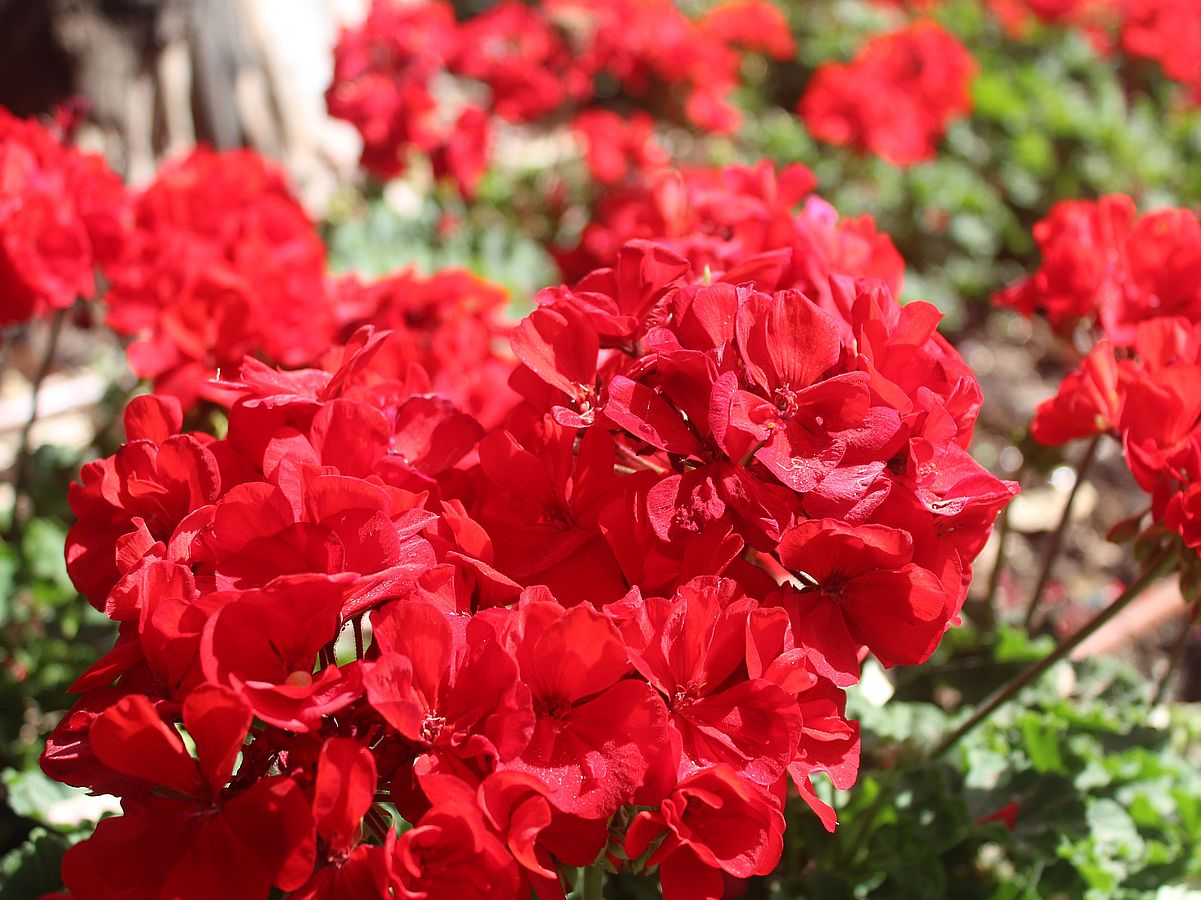Pelargonium zonale
Scientific name: Pelargonium zonale (L.) L'Hér.
Family: Geraniaceae
Common name: Zonal Geranium, Horseshoe Geranium
Although native to southern Africa, the geranium is a typical plant in Andalusian gardens, filling them with color with its red, scarlet, pink or white flowers. It seems to have been collected and brought to Europe in the 17th century.
It is a perennial shrub with a somewhat succulent stem, which can exceed one meter in height, but it is common to see them lower, about 40 centimeters. It has rounded leaves, up to 8 cm in diameter, in some cases with a brownish stripe; sometimes they are lobed and may have an irregularly scalloped margin. The flowers can be single or double, and are grouped in umbel-like inflorescences that arise on a tall, slender stem, so they protrude conspicuously from between the leaves. Flowering is very long lasting, between spring and autumn.
Its name comes from the Greek word pelargos, which means stork, which alludes to the resemblance of the fruit with the beak of these birds. The name of the species refers to the fact that in some cases the leaf has a darker area. It has medicinal properties for respiratory problems. Being such a common and ornamental plant, a multitude of varieties have been developed. It requires a sunny situation or with some shade and a soil that drains well because, although it must be watered moderately, it does not tolerate waterlogging. In La Concepción there is a group in the Paseo de hibiscus, under the Alberca de los claveles, and another behind the Stately Home.

